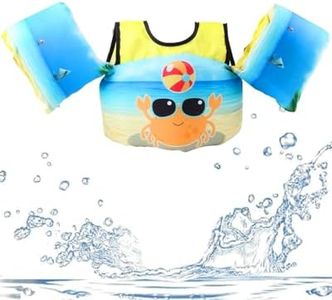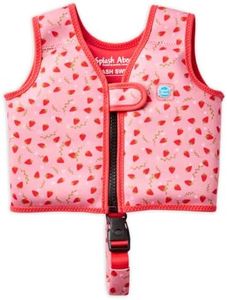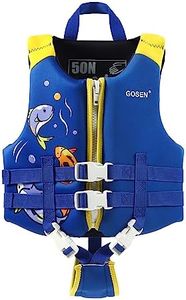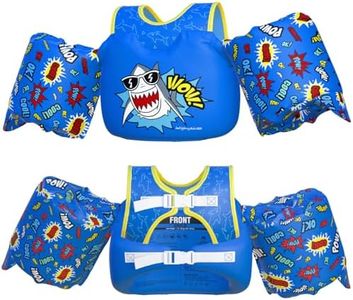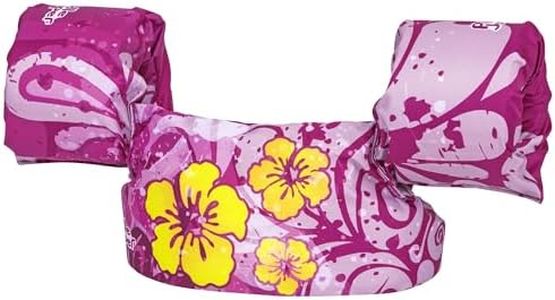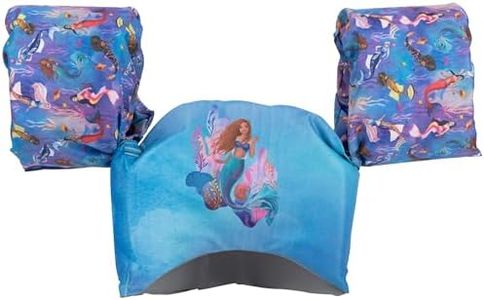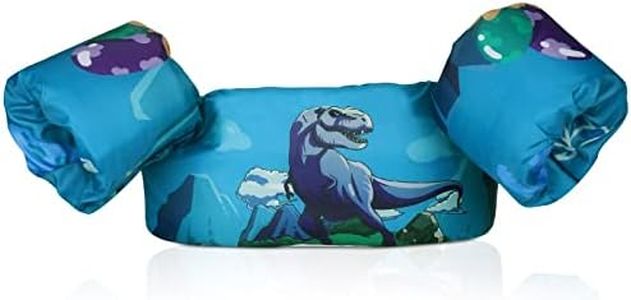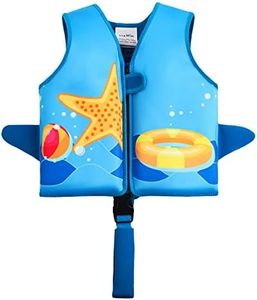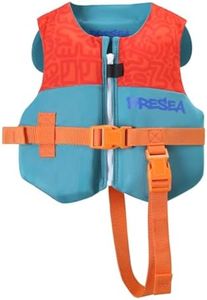We Use CookiesWe use cookies to enhance the security, performance,
functionality and for analytical and promotional activities. By continuing to browse this site you
are agreeing to our privacy policy
10 Best Toddler Swim Vests
From leading brands and best sellers available on the web.By clicking on a link to a third party's website, log data is shared with that third party.
Buying Guide for the Best Toddler Swim Vests
Choosing the right swim vest for your toddler is all about ensuring safety and comfort while they are in or around water. A swim vest is not the same as a life jacket; it's mainly designed to help children learn how to float and gain confidence in the water, rather than for emergency life-saving. When shopping for a toddler swim vest, consider your child's swimming ability, how you plan to use the vest, and whether you'll be actively supervising them. Always remember: supervision is essential, even if the best swim vest is being used.Buoyancy LevelBuoyancy refers to how much the vest will help your toddler float in the water. This is important because it helps keep their head above water while they are learning. Some vests offer gentle buoyancy for kids who are just learning, while others provide more support for those who need extra help. If your child is brand new to water, consider a vest with higher buoyancy, but if they are already comfortable and learning to swim, a vest with less buoyancy allows for more freedom of movement and encourages learning.
Fit and AdjustabilityFit and adjustability are crucial for safety and comfort. A good swim vest should fit snugly without being too tight or too loose, so it doesn't ride up around the child's face or slip off. Look for straps or buckles that allow you to adjust the vest as your child grows. Trying on the vest before purchase, if possible, is helpful to ensure the right fit. If your toddler is particularly small or large for their age, this becomes even more important, as a secure fit keeps them safe.
Material and ComfortThe material of the swim vest affects both comfort and durability. Most vests are made from neoprene or polyester. Neoprene is softer and provides slight warmth, which can be pleasant in cooler pools, while polyester is lightweight and dries quickly. If your child has sensitive skin or will wear the vest for long periods, choose one with smooth seams and soft lining to prevent chafing and discomfort.
Closure MechanismThe closure mechanism – such as zippers, buckles, or Velcro – keeps the vest securely in place. Zippers are easy for adults to fasten and unfasten, buckles offer extra security, and Velcro allows quick adjustments. For toddlers who are especially active or wiggly, a combination of zipper and buckle can prevent the vest from coming undone by accident. Choose the closure you can handle easily, but that your child can’t open on their own.
Certification and Safety StandardsSome swim vests meet specific safety standards or have been tested for flotation abilities. While not every swim vest is certified like a life jacket, it's important to look for those that at least comply with local or international safety guidelines. This ensures a certain level of quality and reliability. If in doubt, check the product labeling or manufacturer information. Prioritize certified vests in situations where you'll be in open water or if your child is less experienced.
Freedom of MovementFreedom of movement is how much your child's arms and legs can move while wearing the vest. This is essential because it allows them to practice swimming strokes and play comfortably. Some vests have larger arm openings or sleeker designs that don't restrict movement. If your child is at the stage of learning to swim, prioritize vests with less bulk that provide buoyancy while still letting them move freely.

